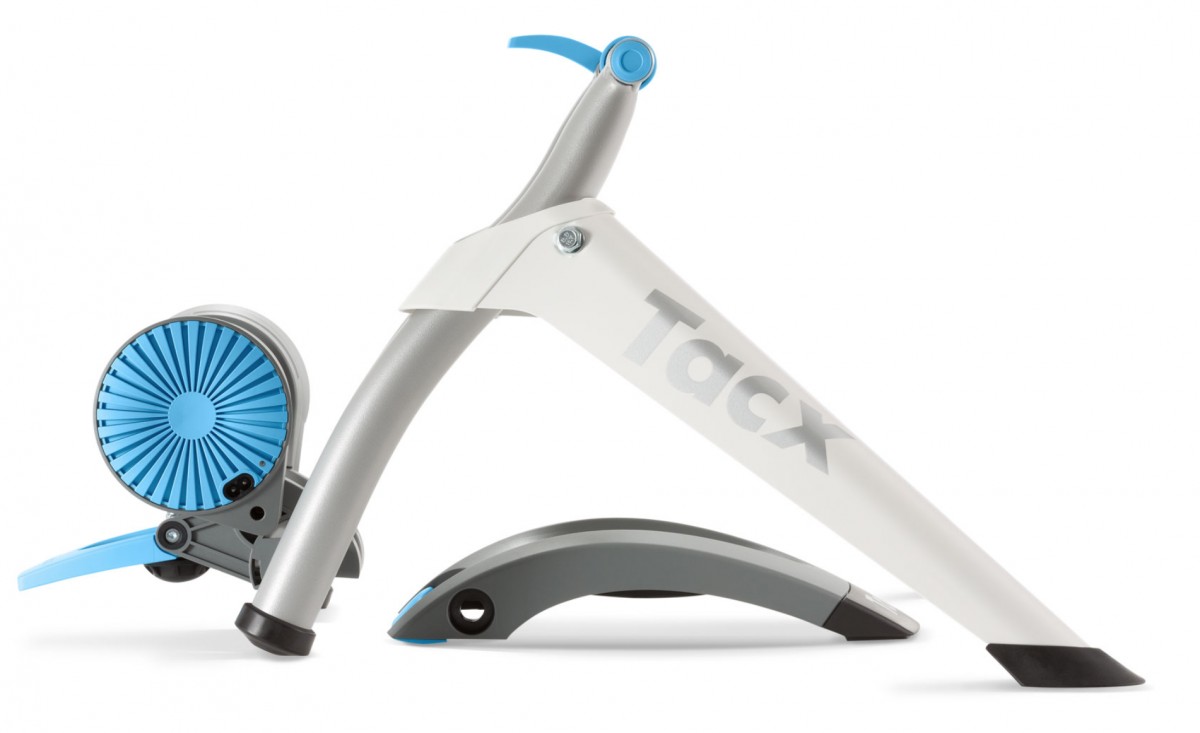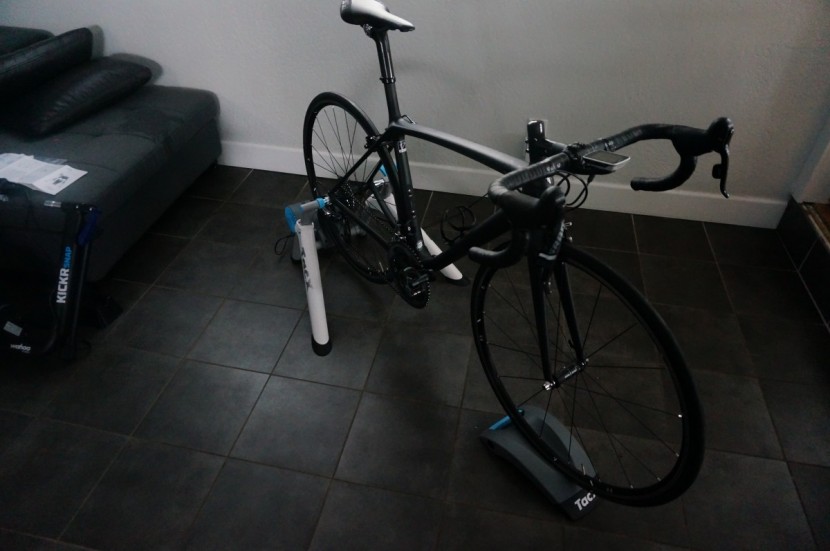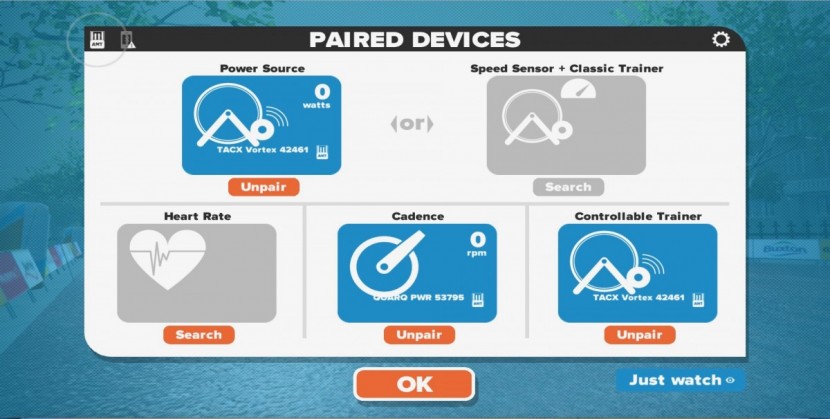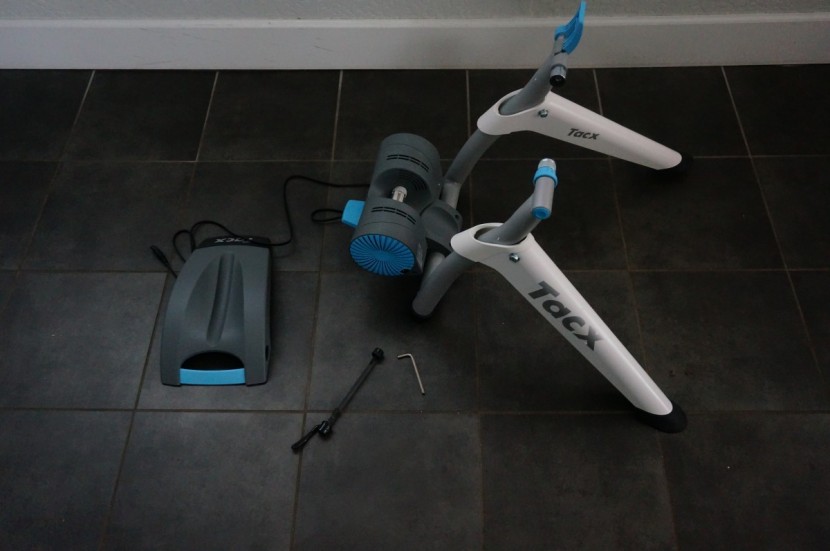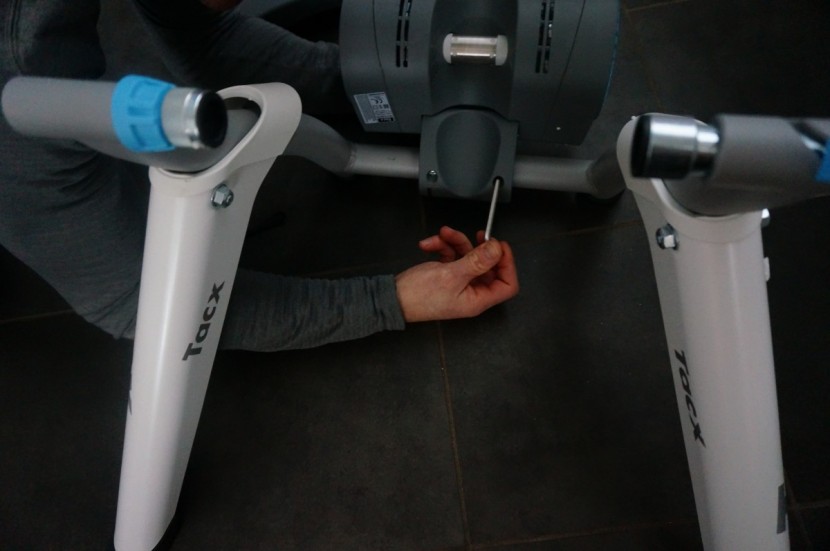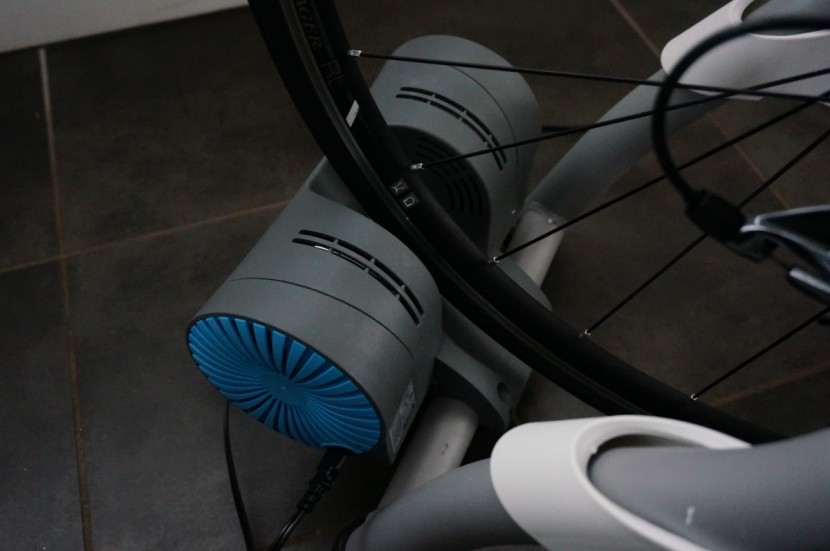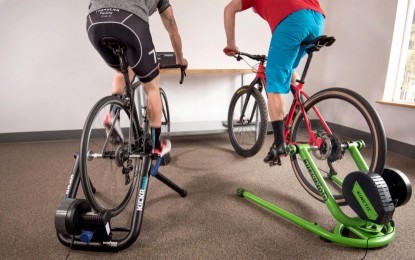Tacx Vortex Smart Review
Our Verdict
Our Analysis and Test Results
Tacx is no stranger to bike trainers; they have been at it a long time and the Vortex is one of their more affordable and popular models. It stands out with its lightweight design and ability to function without power.
Connectivity and Power Accuracy
The Vortex uses both ANT+ FE-C and Bluetooth Smart communication protocols, which give it a good deal of versatility for communication with computers and smartphones, and provides a platform for third-party application compatibility. The Tacx training application is offered in both an IOS and Android version, but it is very basic with no structured options. Essentially, the app is a way to control trainer resistance and perform calibration and that's mostly it. We had some difficulty getting the Vortex to pair and perform software updates. Following some trial and error, we were able to get the mobile version up and running. Tacx also offers training software, but it is PC only with no Mac option. Connecting with Zwift and Trainer Road proved to be trouble-free.
Power accuracy is not a strong point with the Vortex. When compared to power data from a Quarq crank-based power meter, we consistently had a variance of around 15 percent, making it one of the least accurate smart trainers we tested. In addition, we experienced substantial drift during long workouts. All of the tire drive trainers we tested showed some drift, but the Vortex showed more extreme swings in data with power numbers drifting out to 30+/- percent of our Quarq readings.
Road Feel
The road feel of the Vortex does not compare to the heavy hitters tested. The flywheel weighs a paltry 3.6 lbs, making it the lightest in the test, and the lack of inertia is noticeable. The Vortex feels more like a fluid trainer with adjustable resistance.
Resistance Changes
Resistance changes are abrupt in both SIM and ERG mode. The Vortex is an effective tool for training, but it lacks the refinements of the higher-end smart trainers we tested.
Rider Power Output ChangesThe Vortex tends to feel as if it is overloaded or struggling with the input when a sudden increase in power occurs, such as a sprint. The resistance eases up initially followed by a sensation of too much resistance.
Design
The Vortex features a lightweight metal frame that is far less robust than the steel tubular frames found on some of the competition. As a result, it is much lighter, but also less stable under hard out-of-the-saddle efforts.
Accessories & Compatibility
The Vortex is compatible with 130mm, 135mm quick release axle bikes with 26" to 29" wheels. It is also compatible with 142mm thru-axle bikes with an adapter that must be purchased separately. The Vortex comes with a steel quick-release skewer that must be used in place of the stock quick-release on your bike. A front wheel block is also included and doubles as a carry handle when not in use.
Setup
Setup is a bit more involved with the Vortex than with other trainers we tested.
Initial SetUpThe Vortex comes out of the box in several pieces and requires a bit of assembly. The resistance unit must be attached to the frame with several hex bolts. When the resistance unit is attached, you must also select what wheel size you will be using; there are several mounting positions based on the wheel size you will be using. This design also necessitates the need for tools when you change to a bike with a different wheel size. This is a downfall to the Vortex compared to other trainers that don't require any tools to assemble. Once the trainer is assembled, the bike is clamped by the proprietary skewer. The throw in the clamping mechanism is shorter with the Vortex, so there is less space to position the bike between the ends of the clamp. We also found the dial that increases drum tension on the tire more difficult to access than other tire drive trainers. Calibration is similar to other tire drive smart trainers and is done with the Tacx training application.
Ongoing Setup
Much like the other tire drive smart trainers we tested, the Vortex requires frequent calibration before every ride.
Portability
This is where the Vortex shines. At 22 lbs it is one of the lightest trainers we tested. In addition to the low weight, the front wheel stabilizer block doubles as a carry handle when clamped in the skewer clamp. We love this feature as it makes carrying the Vortex far less awkward than other tire drive trainers like the Kickr Snap.
The Vortex provides a progressive resistance magnetic resistance curve with no power. We were easily able to hold up to 350 watts during a pre-race warm-up. This is a big advantage if you plan only to have one trainer and want to be able to use it for home training sessions and take it to races for warmup.
Value
The Vortex is fairly affordable, and despite some power accuracy issues represents a decent value due to its versatility. That said, it's not the best for the money.
Conclusion
The Vortex is a competitively priced smart trainer that is portable and offers loads of versatility for use without power. It does not have the road feel or accuracy of the best trainers on the market, but it is a great option for the rider on a budget who wants a versatile smart trainer.
Accessories
E-Thru Trainer Axle
- Thru axle kit for use with 142x12mm hub bicycles.


